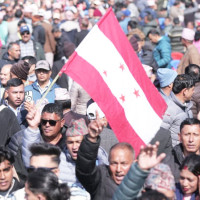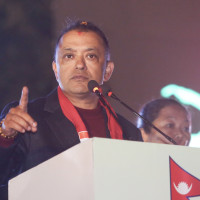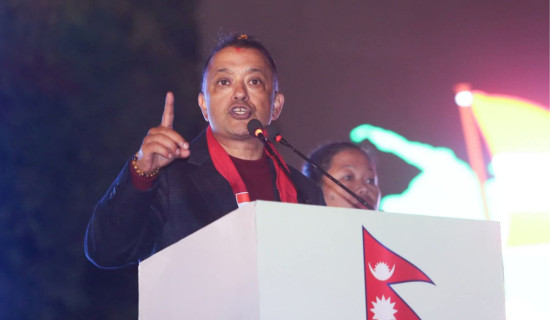- Monday, 12 January 2026
Boao's Model Carbon-Free Area
In an effort to create a model of a carbon-free urban centre, China has converted the Dongyu Island of Boao in Hainan Province into a near-zero carbon zone. This could be an initial step towards achieving carbon neutrality in the long run. The 1.92-square-kilometre island houses the conference centre, hotels of the Boao Forum for Asia (BFA), and many other facilities. It is renowned for the Conference Centre of the BFA, a regional-level organisation established in 2001 that works for economic and trade integration among the member countries in the Asia and Pacific region.
It is an energy-integrated construction project that has generated energy for the various facilities on the island, including the Dongyu Island Hotel, BFA Hotel, Conference Centre, parking lot and other roofs, open spaces, bike sheds, and pedestrian walkways. Currently, the area is termed the Boao Near-Zero Carbon Demonstration Zone.
Photovoltaic roofs and balconies, solar tiles and louvres, and flower fans are used to generate clean energy. Small multi-colour flower fans look like an attraction in the garden for beauty, but they rotate even in moderate wind (1.2 metres per second) and generate electricity. The BFA Press Centre's courtyard is paved with solar panels, indicating a new possibility of using the floor for energy generation.
The project has undertaken the mammoth task of transforming the major buildings and structures on the island into energy generation centres or converting them into energy-efficient ones. Renovation of the facilities, especially the BFA main hall and hotel, which have become the symbol of Boao, was a challenging one as the project was not allowed to modify or demolish any part of it, but they needed a complete replacement of old technological equipment and facilities.
The 91,116-square-metre building that opened in 2003 has historical as well as cultural features and importance. "So, we applied the 'low disturbance, minimal intervention' principle, improved the sunshade system, introduced vertical greening to insulate the performance of the building envelope, and optimised the natural ventilation," said Engineer Hu Yaowen, President of the Hainan Branch of the China Academy of Urban Planning and Design.
Other important works performed at the facility were the reduction of operating energy consumption, the electrification of kitchen stoves, the installation of air-source heat pumps, the setting up of a condensation heat recovery system, the replacement of energy- and water-intensive appliances, and the installation of high-efficiency refrigeration equipment. Similarly, an old air conditioning system that consumed a large amount of energy has been replaced.
Likewise, various transformations have also been applied at the Dongyu Island Hotel. It has upgraded the guest room's air-conditioning and chiller plants, transformed its kitchen and boiler room with 100 per cent electrification, and installed solar equipment with 861.9 kWp on the roof and outdoor venues. All the food items on the island are cooked on electric stoves, and water is heated from renewable energy generated from solar panels or wind flowers.
All the energy-related operations are managed by the smart operational brain, which integrates information from the wireless geographic information system, building information modelling, and the Internet of Things (IoT). According to the Operation Management Centre of the Zone, by utilising this digital foundation, the system interfaces with the power system, photovoltaic system, building control system, energy management system, and forestry carbon sequestration system and conducts automatic monitoring, accounting, and control of carbon emissions within the Dongyu island.
"It also synchronises with the transportation management system, hotel room control system, and conference management system, facilitating intelligent and precise operational oversight," reads a report from the Centre.
Energy generation
The project, which has a capacity of about 5 megawatts at its peak (MWp), includes energy generation, energy optimisation in buildings, green transportation, and waste management.
According to the Hainan government, the Demonstration Zone consisted of 18 projects in 8 categories, including building green transformation, renewable energy utilisation, solid waste resource treatment, water resource recycling, transportation green transformation, landscape ecological transformation, intelligent operation construction, and new power systems.
The 'green renovation' of the facilities started in February 2022 and was completed on March 18, just a week before the BFA's annual conference in 2024. China's Ministry of Housing and Urban-Rural Development, the Hainan Provincial Committee of the Communist Party of China, and the Hainan Provincial Government jointly launched the project. Before starting the transformative work, the Hainan Provincial Government had collected zero-carbon technology solutions and products from around the world.
"The construction of the demonstration area is designed to fully capitalise on the region’s natural wind, solar, and thermal resources. It integrates these with agricultural activities and facilitates energy storage and charging infrastructure through photovoltaic systems," Hu said while briefing the foreign journalists at the Operation Management Centre.
Green transportation
The island has a smart green parking lot constructed with permeable asphalt concrete pavement, solar photovoltaic installations, and flexible charging stations. Permeable asphalt drains rainwater through it and helps in water management, underground water recharge, and environmental sustainability. It is particularly useful in maintaining the desired level of underground freshwater deposits and preventing them from salinating. In the case of pumping out underground water excessively and not recharging it, saline water might fill up the gap in small islands and coastal areas, creating a permanent crisis of fresh water. Pavements are built with China-made solid silica sand bricks that have features like anti-clogging, high permeability, anti-slip, strength, and durability.
Likewise, the charging stations are smartly managed to create a balance between the energy needs of the buildings and vehicle charging. No vehicles running on fossil fuels are allowed to enter the island. To facilitate the tourists and visiting guests who reach there in a vehicle running on petroleum energy, green and intelligent transfer areas are built on the north and south of the island where they can park their vehicles and take electric vehicles. Visitors and tourists can travel along the coastal road and appreciate the beauty of this tiny island.
Smart facilities
Visitors can see a couple of 'smart' facilities on the island, which could be fun for them. For example, coffee lovers can buy a cup of coffee from a zero-carbon coffee machine installed at the bar outside of the BFA Conference Centre, which is powered by solar energy. The coffee is served in paper cups made of recycled materials. When a customer deposits the paper cup in the'smart bin' nearby, it detects the value of carbon emissions when the waste is recycled, and the customer can earn 'carbon coins' that can be used to purchase other items.
To discourage the use of bottled water and waste creation, a drinking water supply facility has also been installed in the area. The facility provides clean water with the needed mineral ingredients and taste.
Smart agriculture
A separate agricultural photovoltaic complementary project of 19.9 MWp is installed outside Dongyu Island, which provides clean energy to the island. This extension also provides energy for the various agricultural-related works in the locality to ensure the smooth supply of vegetables to the island. Farmers here use Israel's smart agricultural technology, Gothic Greenhouse, which also uses smart drip irrigation systems. This Israeli system reduces water use by about 70 per cent and increases the crop yield by about 30 per cent.
Farmers can sell their vegetables and other crops in the nearby markets, which are ever-expanding due to the BFA's secretariat and activities, tourism, and pilot medical economic zone that attracts health and medical technology scientists and experts from across the world.
Organic fertiliser needed for agriculture in the island and surrounding areas is supplied by the organic waste treatment facility, which has a processing capacity of about 9 tonnes a day. It uses a low carbon integrated 'aerobic fermentation' warehouse and process. It has recently achieved a 100 per cent utilisation rate of compostable waste resources on Dongyu Island.
Ecological transformation
The near-zero-carbon activities on Dongyu Island have also been expanded to include ecological transformation and the preservation of the environment. The ecological shoreline of the island has been reconstructed and restored, solar aeration devices have been added to improve the water quality, and the growth of mangroves has been promoted, thus providing habitat for aquatic animals and birds. A post house is built in the coconut grove with bamboo steel, adapting to the design of traditional ancient villages. Its architectural design facilitates enhanced air circulation and cooling. In addition, the entire lighting system is built with solar energy by installing 1,518 panels.
The island has a circular garden, a rural garden, and a western plank road where ground paving, landscape sketches, gabion chairs, and terrain shaping were done by using waste concrete, waste wooden stakes, local stones, and recycled building dregs. The 2.2-kilometre western plank road is fully paved with bamboo and wood, while the shoreline slope is repaired with local plants to create a plank road that blends in with nature. Likewise, the rural garden has lawns and green spaces, providing passageways and rest facilities. It can be used as an outside meeting and communication venue for various purposes.
"In response to the climate challenges, China has acted quickly and shown commitment to the green energy transition. China has to be a role model in green energy generation and promotion, as other countries in the region like Japan, South Korea, and Saudi Arabia have also been pursuing the goal of carbon neutrality," Business Editor of Dap News of Cambodia, Sirey Muni, said after observing the facility.
Despite the initial high costs of installing solar panels, fans, and replacing conventional equipment, it proves to be economical in the long run. The project has used all-vanadium liquid flow storage batteries, which have a 40 per cent overload capacity compared to the traditional lithium batteries. The new technology batteries have high safety and long life, with 20,000 charging and discharging cycles, four times higher than the lithium batteries.
For China, green carbon reduction and renovation of urban built-up areas are the main battlefields to achieve carbon neutrality. A document of the Demonstration Zone reads that its establishment also shoulders the mission of the times to carry out forward-looking exploration for the realisation of 'near-zero carbon' in urban built-up areas and for the creation of a beautiful living environment.
When asked why it is called a 'near-zero carbon zone' and not 'a carbon-free zone', the officer from the Operation Centre said that there still exist some challenges like outdated equipment and facilities, high energy consumption buildings, a low recycling rate of resources, traces of artificial landscape, and insufficient intelligent operation and maintenance capacity. Until these problems are solved, the island can't be a carbon-free zone. The zone will reduce carbon emissions by about 9055.8 metric tonnes in a year. China aims to achieve carbon neutrality by 2060.
(The author is a journalist at The Rising Nepal.)












-original-thumb.jpg)



